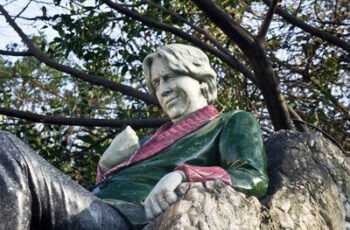IRISH SYMBOLS

The Tri-Color Flag
The Irish Flag is composed of three colored stripes: green (the Catholic population), white (harmony and unity), and orange (the Irish Protestants). It symbolizes hope and political peace and was adopted by the Irish Republic during the Irish War of Independence (1919 – 1921). Moreover, it is always flown with the green at the hoist and if there is the European flag next to it, it has to be at the immediate left of the national flag.

Shamrock
Shamrock is an unofficial symbol of Ireland. It became famous by St Patrick who used the shamrock’s three leaves to explain the Holy Trinity to the pagans during his mission of Christianizing Ireland. Shamrock is also a symbol of luck, mainly if it has four leaves.
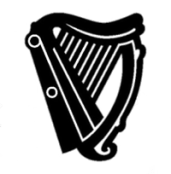
The Irish Harp
The harp is the traditional symbol of Ireland and reflects the immortality of the soul. It’s one of the most popular Irish instruments and this is why you can find the harp symbol everywhere in Ireland from coins to the Guinness pint glass.
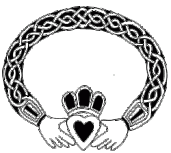
Claddagh Ring
The Claddagh ring originated in the Irish village of Claddagh, is traditionally given to represent timeless love (the heart), loyalty (the crown), and friendship (the hands). The principal legend about the origins of the ring concern Richard Joyce, a silversmith from Galway in the 18th century. He was captured and enslaved by Algerian Corsairs. He never forgets his love and when he finally broke free fourteen years later, he went back to his motherland and offered this ring to his sweetheart as a commitment.
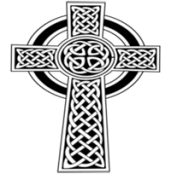
Celtic Cross
It’s the combination of the traditional Christian cross with a ring (a solar symbol of energy, a life source) surrounding the intersection. It became popular for funerary monuments and also spreading well beyond Ireland.
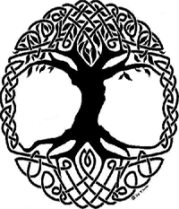
Celtic Tree of Life
The Celts had many tree symbols which all designate the oneness with nature but with others meaning depending of the tree species. For example, ash represents connection, wisdom, surrender. Willow signifies imagination, intuition, vision. And oak is for strength, stability, and mobility.
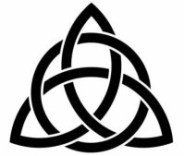
Triquetra / Trinity Knot
It can be found in illuminated manuscripts (as a space filler or ornament) and in the artwork on Celtic crosses and slabs from the early Christian period. Now, the triquetra is offered by a man to a loved one (as a necklace or a ring) and symbolizes the three promises of a relationship such as love, honor, and protection. It can also symbolize unity and trinity of soul, heart, and mind or finally three distinct interlocked levels: physical, mental, and spiritual.
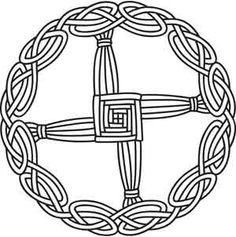
Brigid’s cross
It is a small cross usually woven from rushes, typically with four arms tied at the ends and a woven square in the middle. These crosses are associated with Brigid of Kildare, one of the patron saints of Ireland and are traditionally made in Ireland on St Brigid’s feast day, 1 February, marking the beginning of spring. Traditionally they were set over doorways and windows to protect the home from any kind of harm. For much of the late 20th century, it was used to represent the Irish national broadcaster Radio Telefís Éireann.
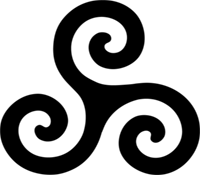
Triskelion
Like the trinity, the triskele stands for the unity of physical, mental, and spiritual. It also symbolizes eternal life, the flow of nature, and spiritual growth.
Related Pages

About Ireland
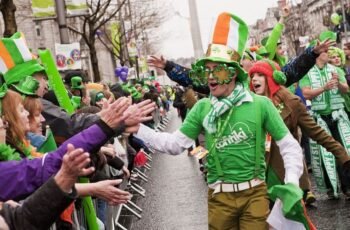
CUSTOM AND TRADITIONS
